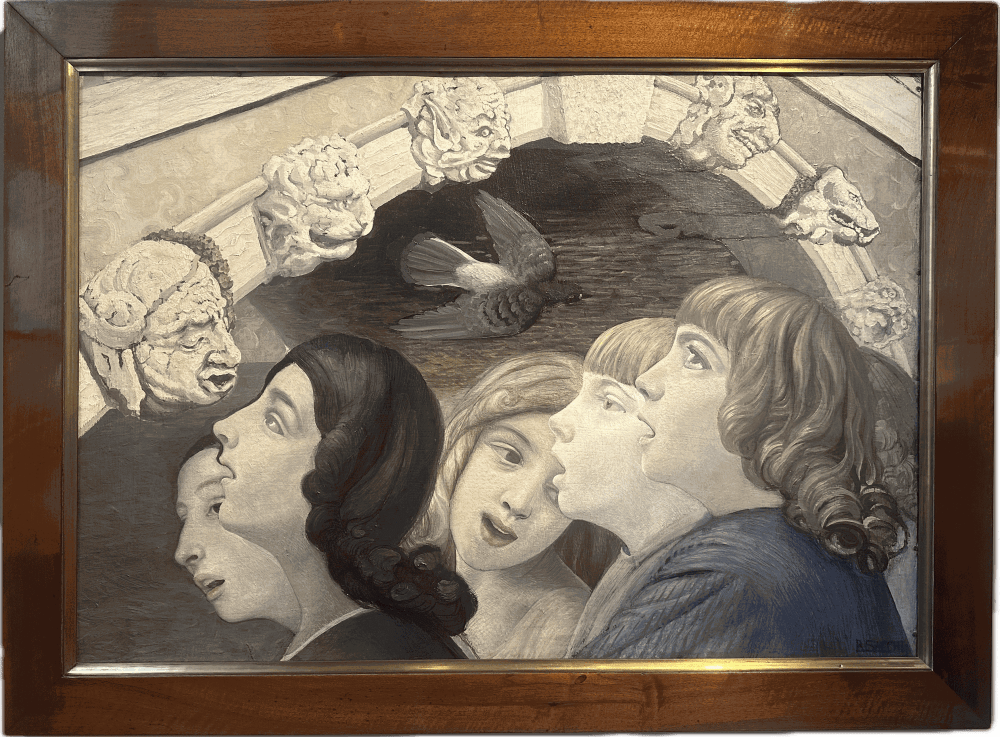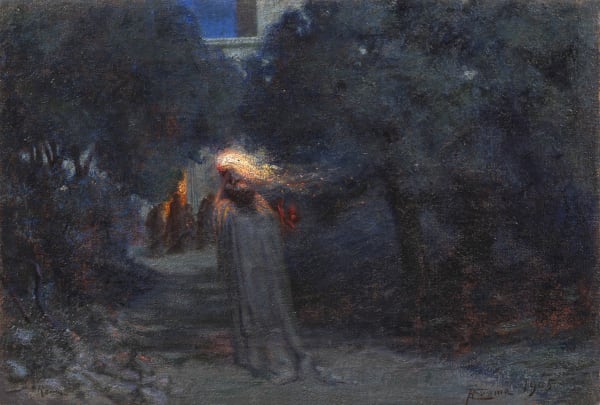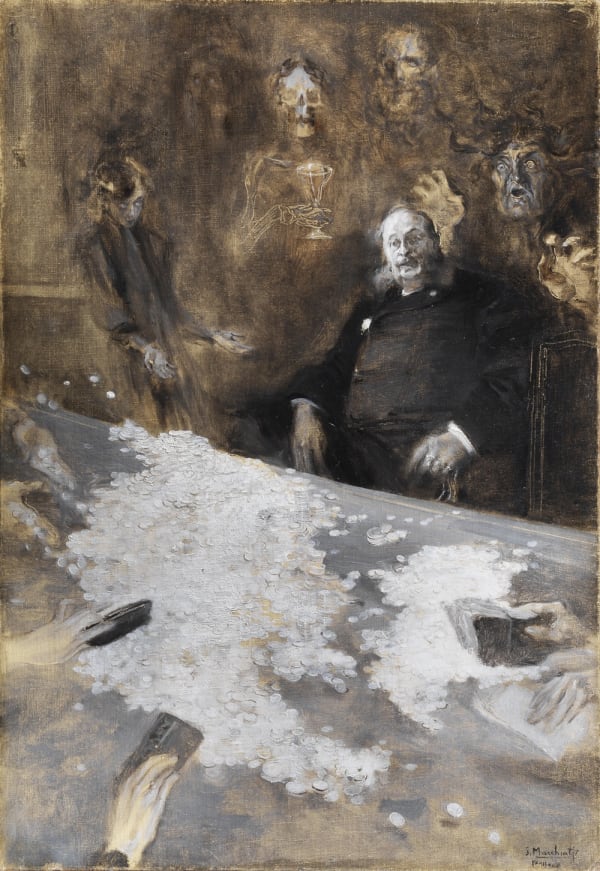

Bortolo Sacchi (Venice, 1892-Bassano del Grappa, 1978)
88 x 118 x 3 cm (with the frame)
Exhibitions
18ª edizione della Biennale Internazionale di Venezia, 1932; Palazzo Bonaguro, Bortolo Sacchi (1892-1978). Dipinti, disegni, ceramiche, curated by Mario Guderzo, Bassano del Grappa, 1 October – 3 December 2000.
Literature
Biennale di Venezia, 1932, p. 83 n. 17, tav. 51 (Il coro); Biancale 1932, pp. 151 fig. 152; Francini 1932; Munari 1972, pp. 17-19, 53 tav. 22; catalog of the exhibition at Palazzo Bonaguro, Bassano del Grappa, 2000, pag. 134 fig. 52.
A good opportunity to confirm the way our artist took a distance from his painter peers, coming more into line with Magic Realism, is offered by the painting Il Coro a Tre Voci by Gianfilippo Usellini (Milan, Museo del Novecento), a work dated 1931, and exhibited at the Brera in 1932. The negative reaction of the critics at the time (Francini 1932) is significant of the difficulty that Sacchi’s language encountered due to its originality.
- Nico Stringa
Text taken from the catalogue of the exhibition held at Palazzo Bonaguro, Bortolo Sacchi (1892-1978). Dipinti, Disegni, Ceramiche, curated by Mario Guderzo, Bassano del Grappa, October – December 2000, p. 134 fig. 52
Join the mailing list
Subscribe to our newsletter to receive all the news about exhibitions, fairs and new acquisitions!




